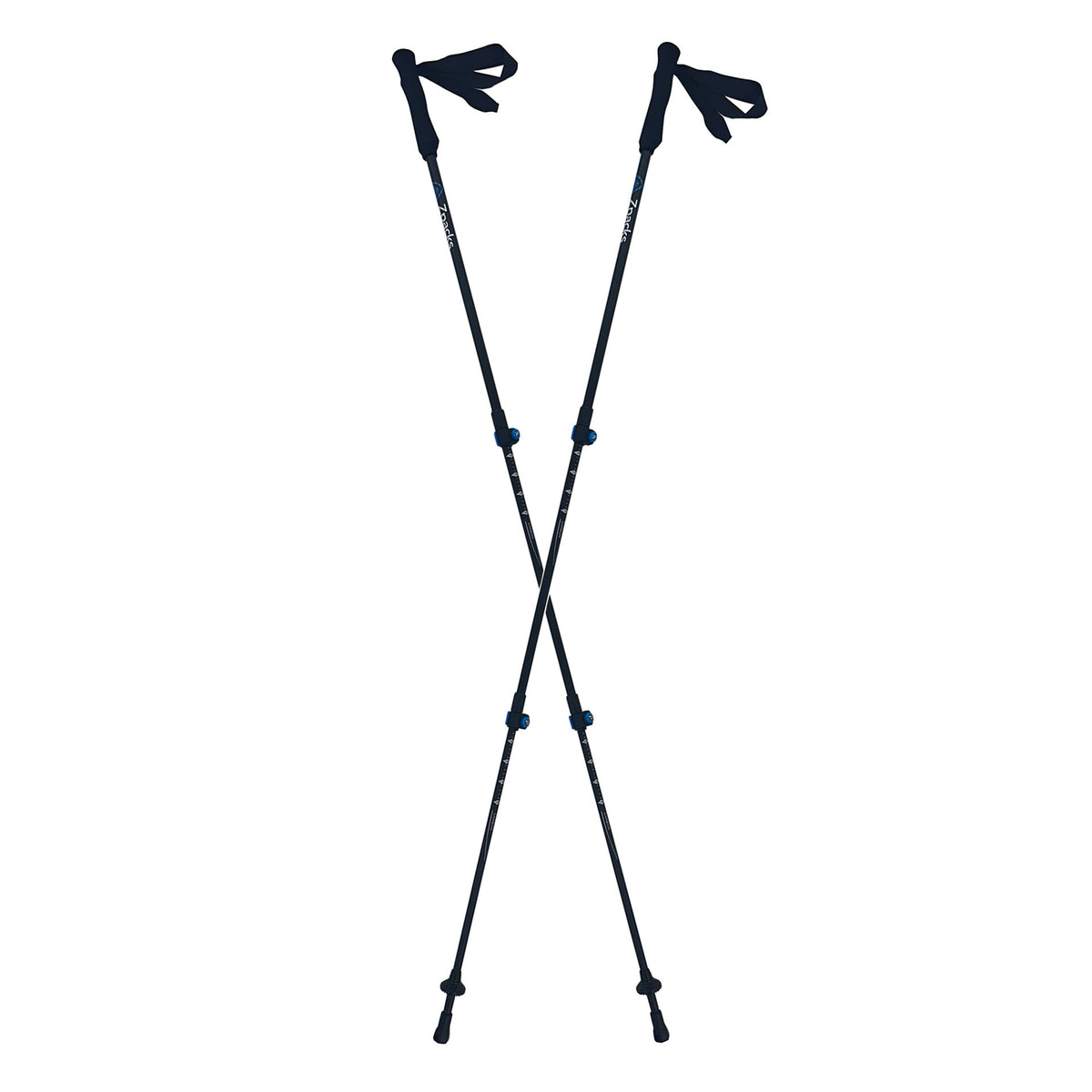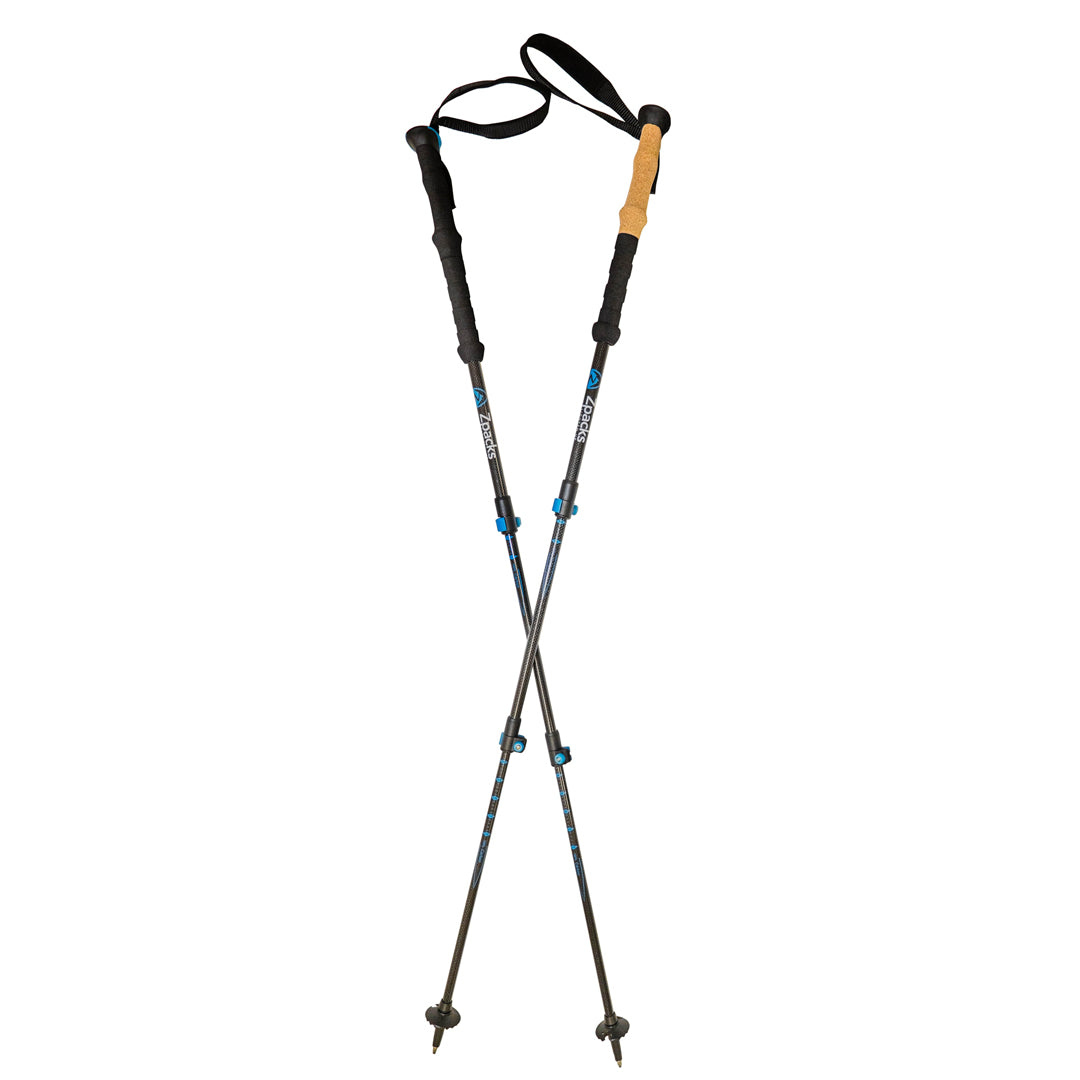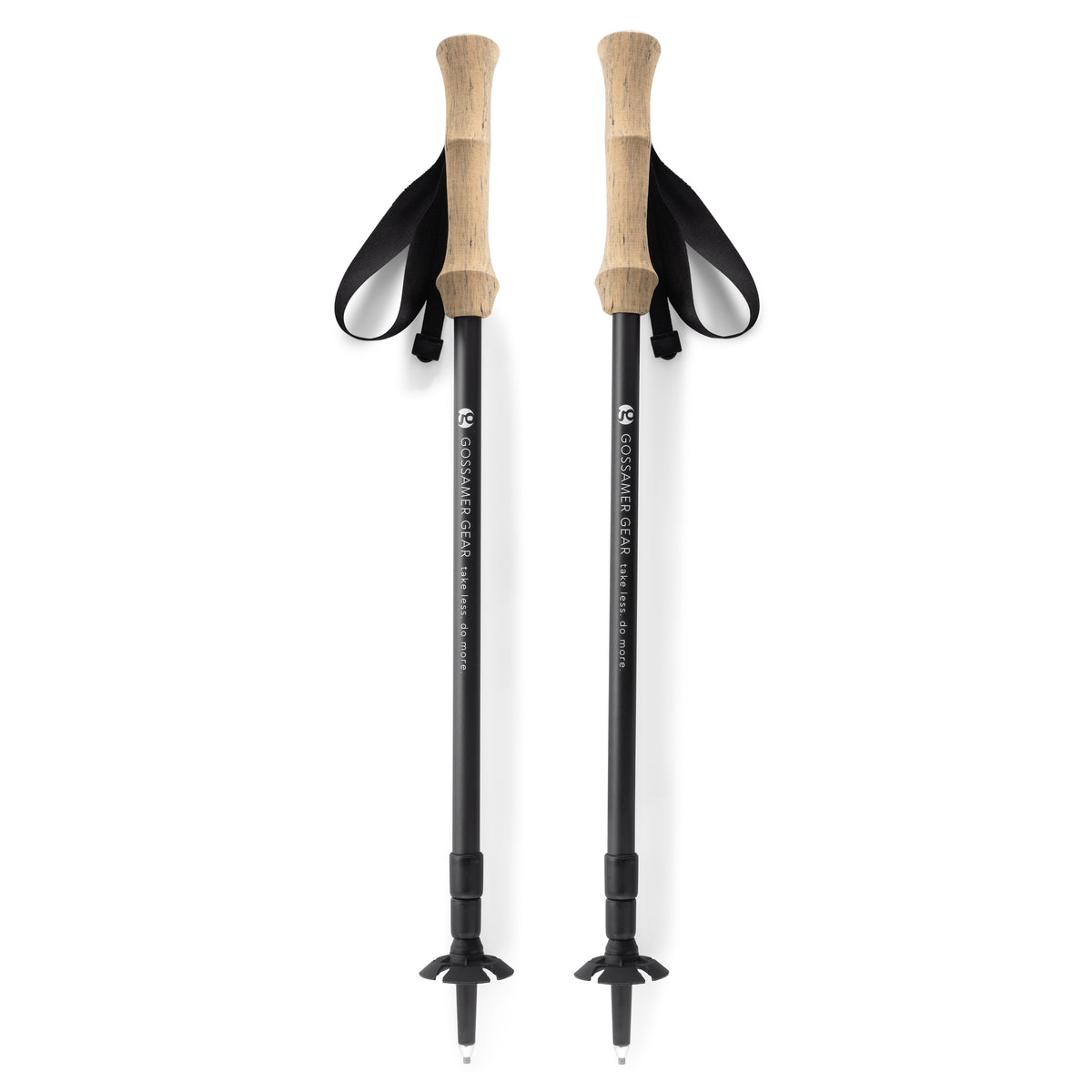When you're gearing up for your next hiking adventure, you might find yourself reflecting on a seemingly simple question: should you use one trekking pole or two? It's not just about personal preference; your choice can greatly influence your hiking experience. While two poles offer maximum stability and support, a single pole provides flexibility and a free hand.
But there's more to evaluate than just the number of poles. The terrain you'll encounter, your physical condition, and the challenges of the trail all play vital roles in this decision. As you assess your alternatives, you'll discover that the right choice can make or break your trek.
Trail-Tested Insights: Trekking Pole Wisdom
- Two poles offer superior stability, especially on steep descents and challenging terrain.
- Studies show using two poles reduces knee strain by 25% when descending.
- A single pole provides some benefits but lacks the comprehensive support of two poles.
- Two poles engage upper body muscles more, offering a fuller workout during hikes.
- Consider trail difficulty, physical condition, and personal preference when choosing between one or two poles.
Unleash Your Hiking Potential: Trekking Pole Perks
Many hikers swear by trekking poles, and for good reason. When you're out on the trail, conquering rugged terrain and pushing your limits, these trusty companions can be game-changers.
But that's not the only benefit!
Hiking with trekking poles transforms your adventure into a full-body workout. As you plant your poles and propel yourself forward, your upper body engages, muscles flexing with each stride. This not only boosts your endurance but also leads to reduced fatigue over those long, grueling distances.
You'll find yourself powering through trails that once left you breathless, your energy levels soaring as you conquer peak after peak. And when the path turns treacherous, your poles become your guardians, providing unmatched stability on slippery rocks and uneven ground.
With two trekking poles by your side, you'll tackle any trail with newfound confidence and vigor.
Comparing Single Vs. Double Poles

Now that we've explored the benefits of trekking poles, you might be wondering: should you use one pole or two? The choice between using two trekking poles or a single pole can greatly impact your hiking experience.
Studies show that two poles can reduce knee strain by up to 25% when descending, providing essential joint protection. No think about crossing a rushing river, the current threatening to sweep you off your feet. With two poles, you'll have four points of contact, dramatically increasing your stability.
While a single pole can offer some benefits, it simply can't match the level of support and balance that two poles provide.
As you gain experience with your outdoor gear, you'll likely find that using two hiking poles becomes second nature. They'll become extensions of your arms, helping you conquer challenging trails with newfound energy and confidence.
Conquer Any Trail: Matching Poles to Terrain

Several key terrain factors influence how you'll use your trekking poles. When you're facing steep descents, using two trekking poles can be a game-changer. They'll reduce the strain on your knees by up to 25%, making those challenging downhill stretches feel less intimidating.
As you navigate uneven surfaces, two poles become your trusted allies, providing extra points of contact that enhance your balance and stability. You'll feel like a mountain goat, confidently traversing rocky terrain that once seemed treacherous.
In muddy conditions or snowy paths, your two poles transform into essential tools for maintaining traction and control. You'll glide through slippery sections with newfound confidence, each step secure and purposeful.

When you encounter stream crossings, your poles become extensions of your arms, helping you probe the water's depth and maintain stability as you navigate the rushing current.
For those epic long-distance hikes that test your endurance, two poles distribute effort between your upper and lower body, reducing fatigue and allowing you to push further than ever before.
With every step, you'll feel the synergy between your body and your poles, conquering diverse terrains with grace and power.
Proper Technique and Adjustment

Having explored the diverse terrains where trekking poles shine, it's time to master the art of using them effectively.
Whether you prefer one pole or two hiking poles, proper technique and adjustment are vital for maximizing their benefits. Always use your hiking gear correctly to guarantee your safety and comfort on the trail.
To start, set your pole length so your elbows form a 90-degree angle when gripping the handles. This ideal position will propel you forward with each stride, making your journey feel effortless.

As you encounter varying environments, adjust your poles accordingly. Shorten them for grueling uphill climbs, allowing you to power through with improved posture and reduced strain.
When descending steep slopes, lengthen your poles to maintain stability and protect your knees from the jarring impact.
Choosing the Right Pole Setup

Hikers often grapple with the decision of whether to use one or two trekking poles. As you beging to consider your next trek, the choice between a single pole or a pair could make or break your journey.
But don't discount the versatility of a single pole. For day hiking on flat terrain or when you need a free hand for scrambling, one pole can be your trusty companion. It's lighter, less cumbersome, and perfect for minimalist backpackers.

As you test both setups, you'll discover which configuration suits your style best. Reflect on your physical condition, the trail's difficulty, and your gear preferences. Recall, there's no one-size-fits-all solution.
Whether you choose one pole or two, using hiking poles will enhance your trekking experience, transforming you into a more efficient and confident explorer of the great outdoors.









